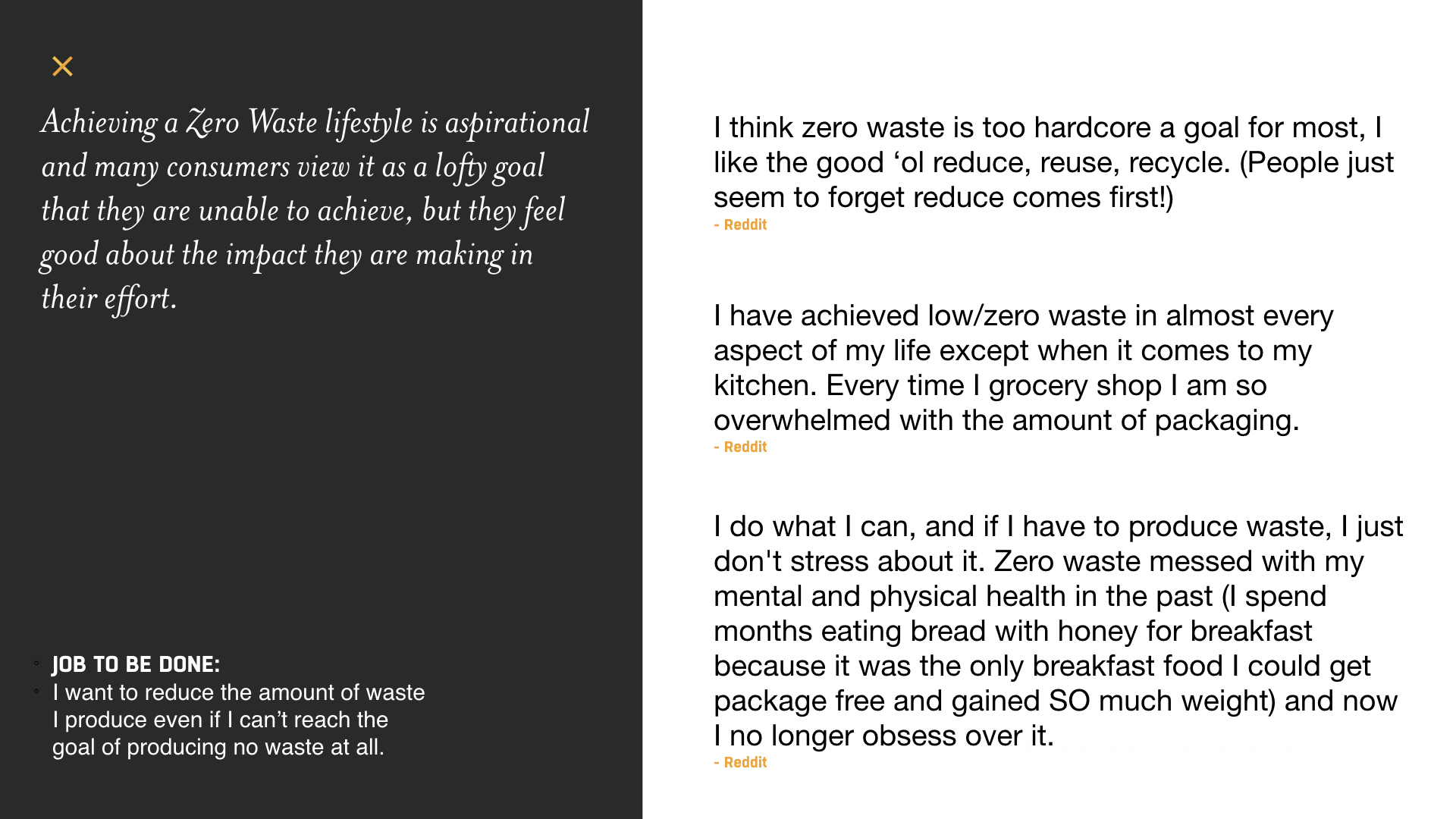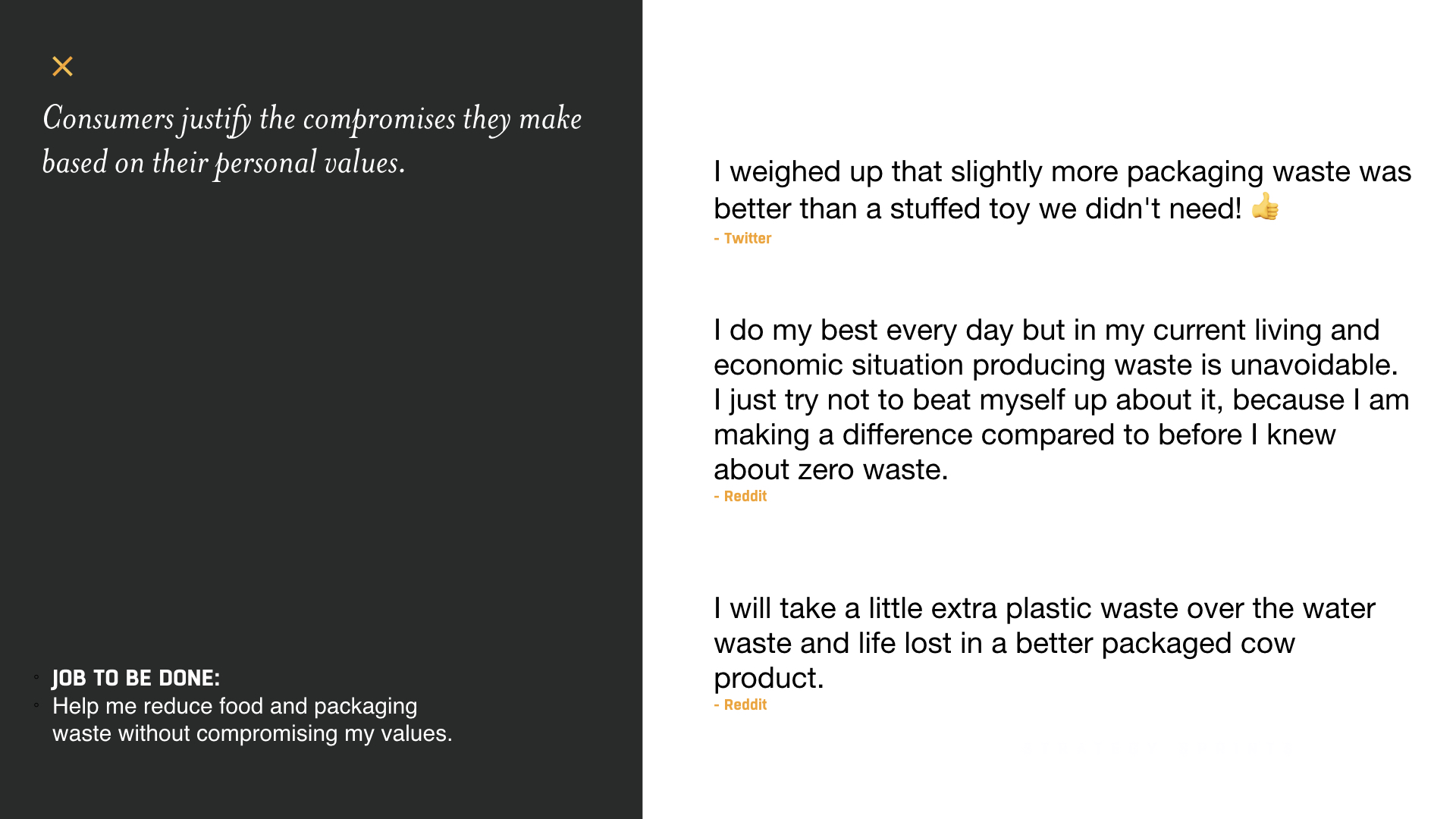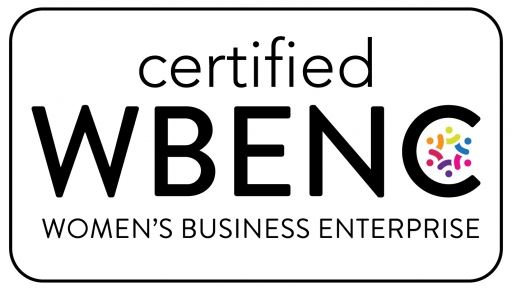Consumers feel tension around waste – whether about time, money, food, or materials. Changing household dynamics, e-commerce, delivery, mobile lifestyles, and the trend toward snacking v. regular meals have molded the landscape around food. Simultaneously, consumers are pushing back against single-use plastics that flood landfills and against materials waste in general. We wondered, “what is the tipping point when it comes to food waste and packaging waste?” Is one a higher priority than the other? And, what tensions, compromises, workarounds, and struggles come into play as consumers wrestle with waste?
We conducted a lean, mini Social Media Ethnography, looking at publicly available, first-person consumer sentiments on social media between November 4, 2019, and January 4, 2020. Three things stood out:
- Consumers use strong language in expressing anxiety around both food and packaging waste.
- Achieving Zero Waste is aspirational for most.
- Consumers make and justify compromises based on their personal values.
Consumers use strong language – “hate”, “abhor”, “struggle” – in expressing anxiety around food waste. They express frustration with rigidity in the quantities and sizes available for purchase, and they wish for the ability to buy the exact amount of food they need and consume without wasting unused or spoiled food.
- Job To Be Done: Give me a way to enjoy a variety of foods without wasting food that spoils.
- Job To Be Done: I want to buy food in just the amount I need even if I am just one person — or a family of six.

Consumers also have strong sentiments around packaging waste – especially waste generated by others – and express frustration with viable day-to-day solutions.
- Job To Be Done: Give me affordable, viable choices to minimize my food packaging waste even when I can’t control what others do.

Achieving a Zero Waste lifestyle is aspirational and many consumers view it as a lofty goal that they are unable to achieve, but they feel good about the impact they are making in their effort.
- Job To Be Done: I want to reduce the amount of waste I produce even if I can’t reach the goal of producing not any waste at all.

Consumers justify the compromises they make based on their personal values.
- Job To Be Done: Help me reduce food and packaging waste without compromising my values.

Brands taking steps to solve for some of the above Jobs To Be Done include Pete and Gerry’s Organic Eggs – testing the use of reusable egg cartons in a few east coast groceries. and Regrained combats food waste by up-cycling it. They harvest the leftover grain from brewing beer and mill it into SuperGrain+, a nutrient-dense flour. Perdue Farms will begin packing some of its poultry in meat in foam made from cornstarch that dissolves under running water or in a landfill or compost bin. And, a new workshop, Redefining Flexible Films, is taking place this Spring and bringing CPG leaders together to explore breakthrough packaging solutions that address the tension around packaging waste; and your company has an opportunity to participate.
And, The Wall Street Journal recently reported on the increase of grocery stores offering bread in smaller loaves and packages to accommodate consumers who don’t want to waste food and can’t eat a large loaf before it becomes stale. Consumers have demonstrated a willingness to pay more/portion for the smaller loaves…..but there is some angst around the generation of packaging needed for two small loaves v. one larger loaf.
Job To Be Done: Give me food in quantities I can consume while fresh and without creating unnecessary, landfilling packaging waste.
The struggle around this is real, and we have seen that opportunities exist where there is tension. We are hopeful around the above Job To Be Done and excited to work with brands looking to solve this.


